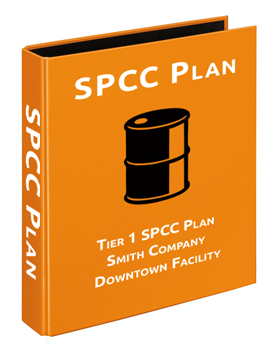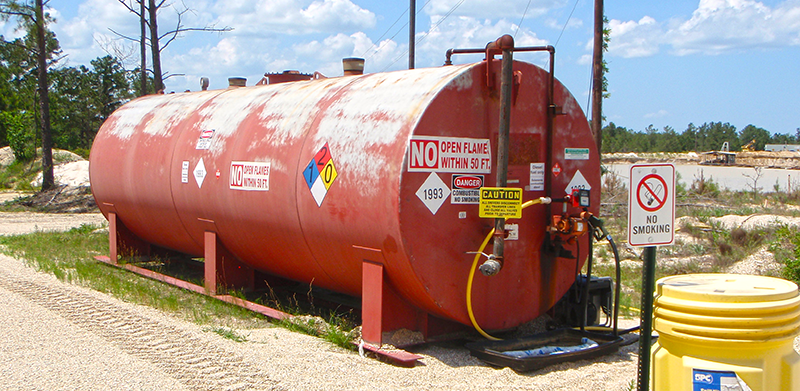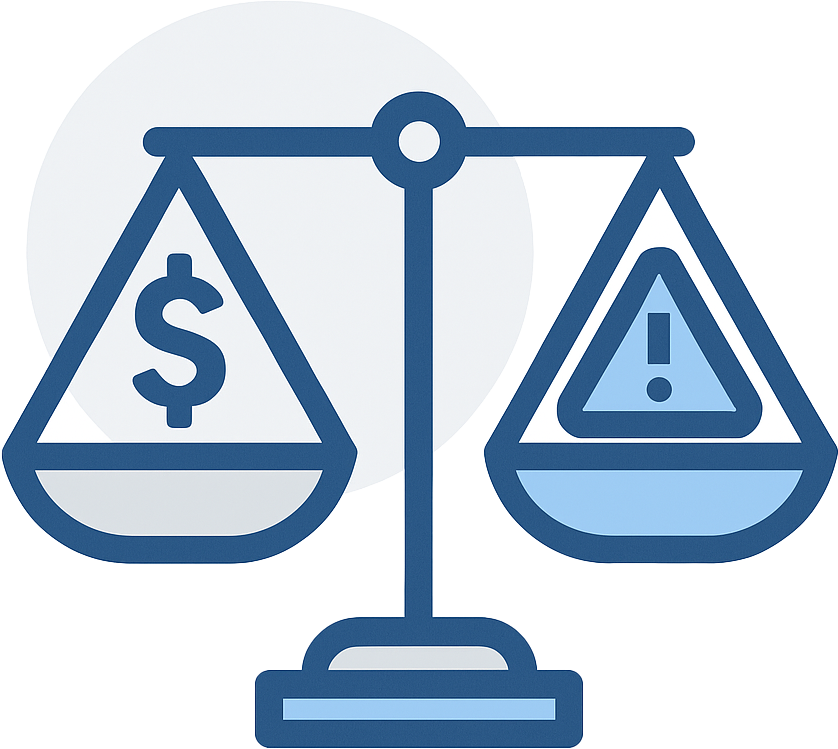Learn when you should, and are required to update your SPCC Plan.
A good client of ours called me up the other day and had a great question. They had just rearranged some equipment and oil tanks around their site, and a light went on in their head. They immediately noticed their SPCC Plan didn't match their current site layout, and they wondered what to do. So she called our office and asked should we update our plan? Can we do this? What's the process here?
It's a great (and pretty simple) question, but the answer really depends on the specifics of your site.
In this case, yes she could update their plan herself, because they have the smallest, simplest plan, a Tier 1 Plan, and they really only moved two 275-gallon tanks around in their maintenance shop. Nothing big, nothing major, and she knew enough to change things correctly.
However, depending on your facility, this might not be an option, and I'll explain.
When should you update your SPCC Plan?
This is a pretty easy enough question with a pretty simple answer.
Update your plan when your site changes. What does that mean?
- You moved tanks around. Maybe you reconfigured your maintenance shop, like my client did. Maybe you changed the site layout, and had to move a fuel tank to the other side of the facility. Maybe you changed where your heating oil tank is located. If you're moving tanks, you need to change your plan.
- You changed the capacity of your tanks. This can get tricky. If you change the size of your tanks, you need to change your plan. Maybe you got a larger tank because you needed more fuel on site. Maybe you got a smaller tank because you are using a smaller, more efficient heating unit. When you change the size of your tank, you might also need to change your plan. For instance, if you placed a larger tank onsite, you could be bumped up into the next tier of plans, such as a Tier II Plan or Full PE Certified Plan. Or, if you shrunk your capacity, you might be eligible for using a Tier I Plan instead.
- You changed the contents of your tank. Maybe you switched from gasoline to diesel, or you're now using a heating oil tank as a used oil tank. If you change what your tank holds, you should change your plan. By the way, do you know the difference between used oil vs waste oil?

- You removed a tank from your facility. This is a no-brainer. If you remove a tank, then it needs to be removed from your plan.
- You added a tank to your facility. Again, a no-brainer. If you added a tank to your site, then you need to add it to your plan.
- You replaced a tank with a new or different tank. I'm not talking about the capacity changing, I'm talking about the actual tank changing. If you had a 500-gallon double-walled tank, and replaced it with a 500-gallon ConVault tank, then you need to change your plan.
- Changed the site layout overall. Let's say you regraded your site because you were having a problem with stormwater runoff, or you moved a drive isle, or added a wall, or anything that changed how your site looks and behaves. You'll probably (but not always) need to change your plan. This depends on where the changes are relative to any oil or petroleum onsite. If it's on the other side of the facility away from any area that stores oil or petroleum, you might not need to change it. Then again, if it has anything to do with where oil could potentially flow to, then you will need to change it.
- Your company or organization changed. This is a frequent problem I see. If your company was called XYZ Industries and was bought, reorganized, or went through any change that changed the name of the business, then you need to change your plan. If you're not the same company as your plan says, then your plan isn't valid. Plans do not roll over from company to company.

- You changed the personnel at your facility. If someone's name is all over your plan, such as the emergency contact, or a person responsible for inspections, and they're no longer at the facility, or their role within the company changed, or anything similar, then you need to change your plan.
- Every 5 years? Your plan is only good for 5 years, at which point it either needs to be updated or, if nothing changes, needs minimal updates to show this is the same plan, but it applies for another 5 years. This isn't a set it and forget it item, you need to keep tabs on how long you've had it and make any necessary updates, even if it's just a cover page.
- Don't forget the 55-gallon drums! Just remember, everything outlined above goes for 55-gallon drums too. If you change how many you have on-site, or what you're storing, or replaced a couple of drums with a tote, you need to change your plan. This is the most common issue I see with plans, and it gets a lot of folks in trouble. People always wonder are 55-gallon drums included in plans and the answer is yes!

Now, for many of these I'm not talking about changing the entire plan. You may need to update a page or two. You may have to update your site map, or revise your contact information page. Check your plan carefully, and determine what needs to be changed. If you only need a few new pages, make note of that. Add a revision page to the end or beginning of the book so you can keep track of what's been changed over time.
Those are some basic reasons why you should update your plan, but the real question is can you do it yourself?

Can I update my SPCC Plan myself?
This answer is tough to pin down, and every site and every instance is different, but it usually boils down to one simple thing.
How serious of a change was made?
For instance:
- You moved small tanks around inside a building. Think back to my client. They moved two 275-gallon tanks from one side of their maintenance garage to the other. In that case, update the plan yourself since it’s such a minor move.
- You moved a medium-sized tank to the other side of your facility. In this case, you'd probably want an expert to revise your plan, which should be a relatively quick and easy thing (assuming they made it, I've yet to see an environmental firm revise another firm's plan, us included). However, if you're a savvy environmental manager, and have access to some basic drafting software and a large enough printer, you could revise your site plan yourself, change the necessary pages inside the plan, and create a revision page on your own. It really depends on the magnitude of what happened on-site, and you're level of experience.
- You added a new 5,000-gallon diesel fuel tank to your facility. This change should almost without a doubt be handled by an expert. The addition of this tank would most likely change the type of plan you need and require extensive revisions throughout the book. Depending on the specifics of the changes, it might be more cost-effective to just get a new plan. If you're unsure how much an SPCC plan costs or how long it takes to get a plan, check out those links to learn more.
Use your best judgment when it comes to making a change. Just keep it in the back of your mind that these plans are designed to help keep your facility and employees out of harm's way should an accident occur. If you can handle the change, go for it. You can also get help after the fact if you realize you're in over your head. To learn more about updating your plan, click here to contact us or call us at 609-693-8301 to discuss your needs today.

Additional SPCC Articles















